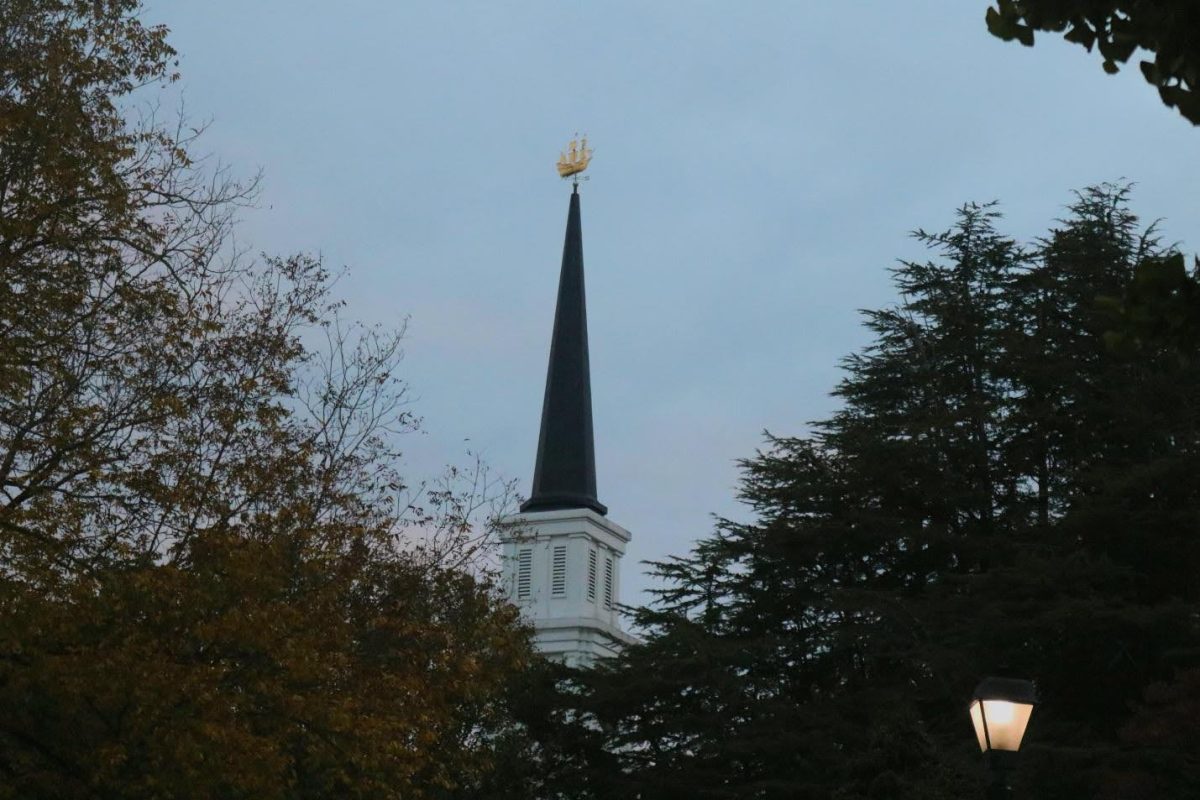**Sources can be found at conclusion of the article**
When walking through the campus of Piedmont University, you may look up and see the weathervane that sits on top of the chapel. This weathervane signifies one of the most historical symbols in world history: the Mayflower. But you may then ask, “What reverence does this ship have on these grounds?”
The story of Piedmont starts with the story of its town: Demorest, Georgia. The city began to undergo development by the Demorest Home, Mining, and Improvement Company in 1889. They sought to build homes and industry for those who came to the city. Due to the large area that would be available advertisements were given out to all 45 members of the current union. In those advertisements, promises of timber, land, and health were given.
“Yellow fever is impossible here,” and “Malaria is unknown,” were some of the verbiage used to attract prospective individuals and families. The early settlers were cut from the same cloth as one another – a group of people with belief in the main Protestant denominations. Among them was the owner of the Demorest Bank, Jesse S. Green. Demorest while looking to establish itself decided that a great way to do that would be to found a college. So, in 1897 Charles L. Bass an attorney of the neighboring town Clarkesville drafted a charter for the establishment of a college. On Sept. 10th, 1897, it was approved by the Habersham Superior Court.
Jesse S. Green being one of the main supporters and benefactors of the college was honored by having the Institute named after him, and in September of that year, the J.S. Green Collegiate Institute opened its doors to first graders through college juniors. Ushering in this new era of education in northeast Georgia was the institution’s first president, The Rev. Brother Charles C. Spence, an ordained Methodist pastor and formally president of Young Harris College. A native of Lawrenceville, Spence was the son of a slave owner, and while his father owned some 400 slaves, Spence wrote, “there was in Georgia a man of large heart and progressive ideas — he did not believe in slavery and looked for some method of emancipation.”
Spence came from a background of ideals that were not well received in his time and area, as leading to the Civil War. At the age of 14, Spence enlisted to fight in the Georgia Calvary. Post-war, Spence became a minister, which ultimately led to his invitation to serve as the head of the J.S. Green Collegiate Institution. After some years of operation, the school changed names to J.S. Green College. Despite great success in 1899, the college fell into financial trouble.
Despite the obvious Methodist ties and attempts by the college to be accepted by the North Georgia Conference of the Methodist Episcopal Church of the South as a member school, the conference did not accept the College into admission, perhaps because of their own financial issues at the time. To keep the doors open, Spence cashed in his life insurance policy and continued looking for outside funding.
The Congregationalist movement came to America in 1620 to escape religious persecution. They sailed across the Atlantic Ocean and landed in modern-day Massachusetts at a site that would be known as Plymouth. These Congregationalists — who we know today as the Pilgrims — had eyes on the development of education with founding of colleges such as Harvard and Yale as examples. The Congregationalist Church also shared similar viewpoints to Brother Spence being at the forefront of abolitionism and other social justice movements at the time such as women’s suffrage and the temperance movement.
The church focused on elementary and vocational schools for freedpeople after the Civil War opening colleges such as Atlanta University now known as Clark Atlanta University and Talladega College. Yet they still had an interest in broadening education specifically in the southeast. Spence knew that the Congregational Church would be looking to further expand into education and knew an opportunity would present itself.
And thus, it did. At a meeting of the Union of Congregational Churches of the Gainesville District Williard Chrisler, a delegate of the church’s main Atlanta chapter, met with Spence and a campus tour by the leader of the Congregational Church in the southeast Frank Jenkins. After Jenkins’ visit it was decided that the church would take on the college and their financial hardship in order to expand their mission for education in the south. In 1901 the American Missionary Association, an arm of the Congregationalist church, formally accepted the college and after another amendment to the original charter in 1902 the college’s name was once again changed this time to Piedmont College — a name meaning the foot of a mountain
This name would be apt for the location but it has another meaning in the annals of history. In Italy there is a mountain range named Piedmont where a sect of Protestant believers who were killed in 1545 for their faith. Piedmont would be a symbol in the southeast of forward thinking for a more hopeful and progressive age and still today those views uphold. The Mayflower weather vane, Plymouth — and Mayflower hall and the streets of the campus are homages to the church that kept the doors and open and the people who founded those beliefs and who decided to follow their hearts and their faith to create a better present for themselves and a better future for the generations.
The congregational christian tradition. The Congregational Christian Tradition | Congregational Library & Archives. (n.d.). https://www.congregationallibrary.org/congregational-christian-tradition
Congregational Church – New Georgia encyclopedia. (n.d.). https://www.georgiaencyclopedia.org/articles/arts-culture/congregational-church/
Our History. Piedmont University. (n.d.). https://www.piedmont.edu/about-piedmont/history/
Lane, M. C. (1993). The Legacy of Piedmont College . Piedmont College Press.















